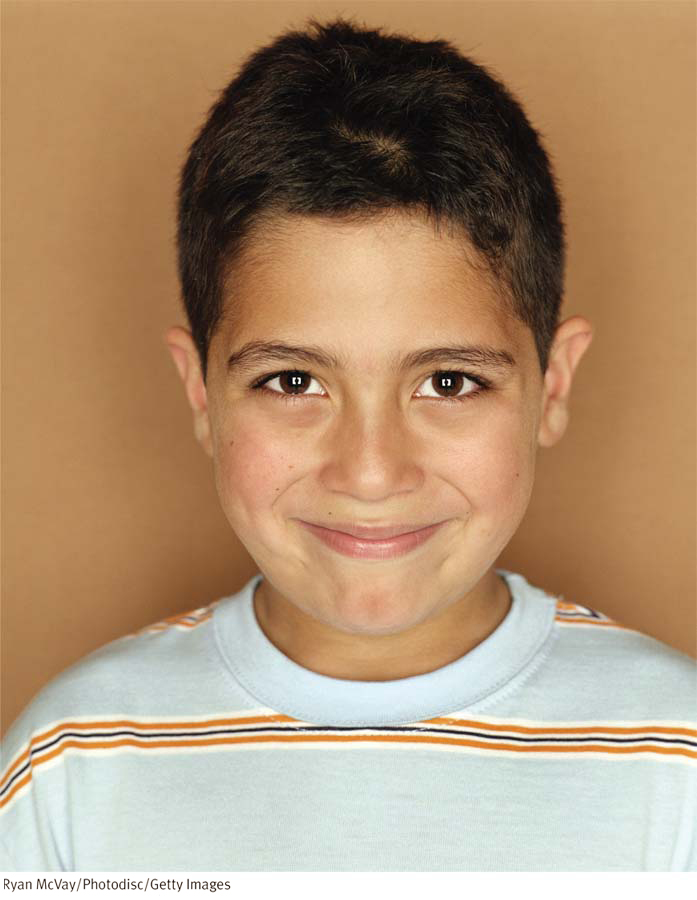Chapter Introduction

Socioemotional Development
CHAPTER 6
CHAPTER OUTLINE
Observing the Self
INTERVENTIONS: Promoting Realistic Self-
Doing Good: Prosocial Behavior
INTERVENTIONS: Socializing Prosocial Children
Doing Harm: Aggression
Play
Girls’ and Boys’ Play Worlds
Friendships
Popularity
Bullying
EXPERIENCING THE LIFESPAN: Middle-
HOT IN DEVELOPMENTAL SCIENCE: Cyberbullying
INTERVENTIONS: Attacking Bullying and Helping Rejected Children
Nine-
As she saw the kids jostling, filling up the recess area with joyous noise, Moriah—
Everyone closed ranks, yelling, “No girls allowed!”
Then Mark pushed in, as usual, disrupting the game, hogging the device the kids had renamed “the ball.” A few minutes later, Jimmy, an anxious child, worked up the guts to timidly enter the group.
“Get out!” erupted Mark, “You wuss. You girl!”
Mark bopped Jimmy over the head, and—
“Cool it, guys,” he said. “Man, are you all right? Come join us.”
Josiah comforted Jimmy and managed to tell the other boys to lay off Moriah (“Hey, guys, she’s really cool!”), while Matt did his best to keep Mark from messing up the game. All of this earned these two good-
Have you ever wondered why children, such as Josiah and Matt, are competent and caring, while others, like Mark, seem insensitive, aggressive, and rude? Perhaps you are curious about what makes children bond together as best friends, or why people, like Jimmy and Moriah, seem isolated from their peers. Have you puzzled over why boys love to run around or wondered why elementary schoolchildren (say) they love to hate the other sex? Maybe you simply want to understand your own and other people’s behavior in a deeper way. If so, this chapter, covering children’s emotional and social development, is for you.
In the following pages, you’ll be getting insights into the challenges in social cognition that children face as they travel from preschool through elementary school. But this chapter has another purpose: to help children such as Moriah, Mark, and Jimmy, who are having troubles relating in the world. With this goal in mind, let’s begin by highlighting that fundamental human challenge—